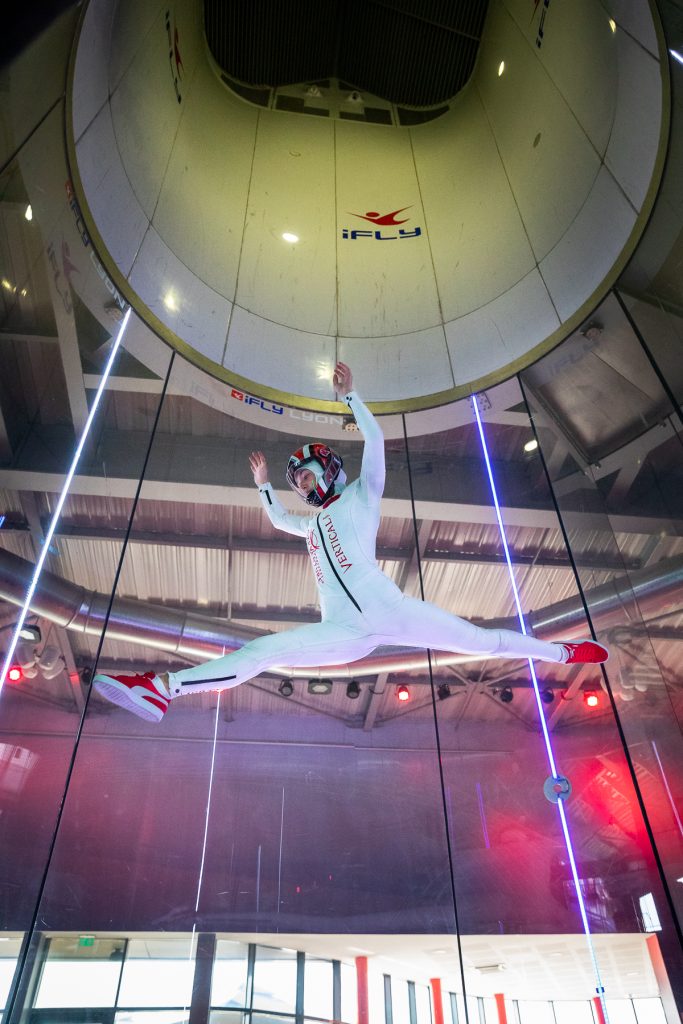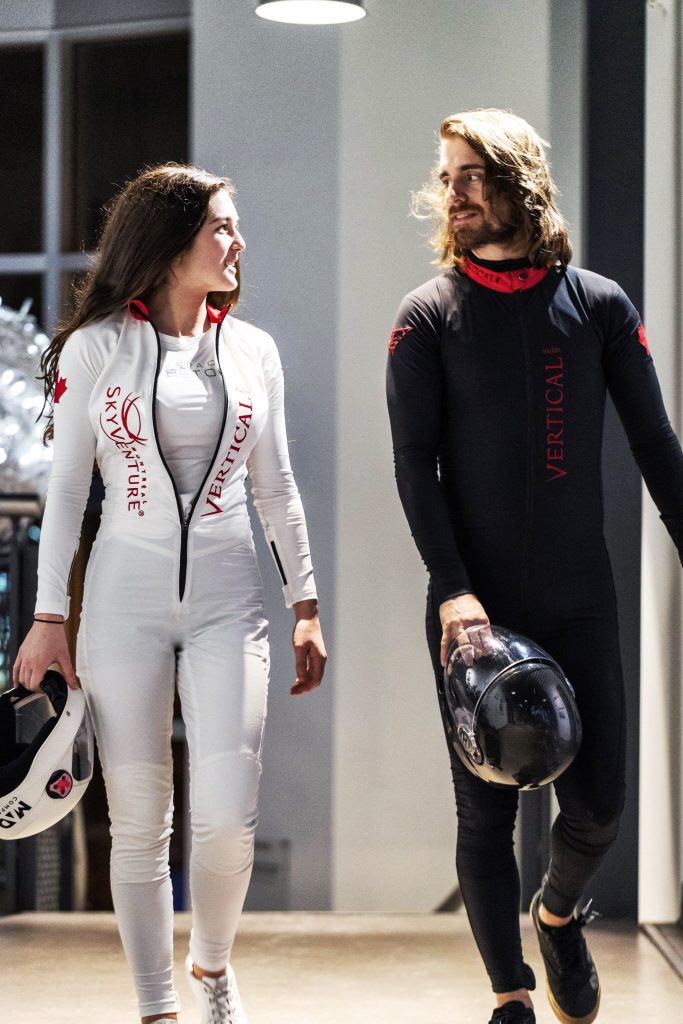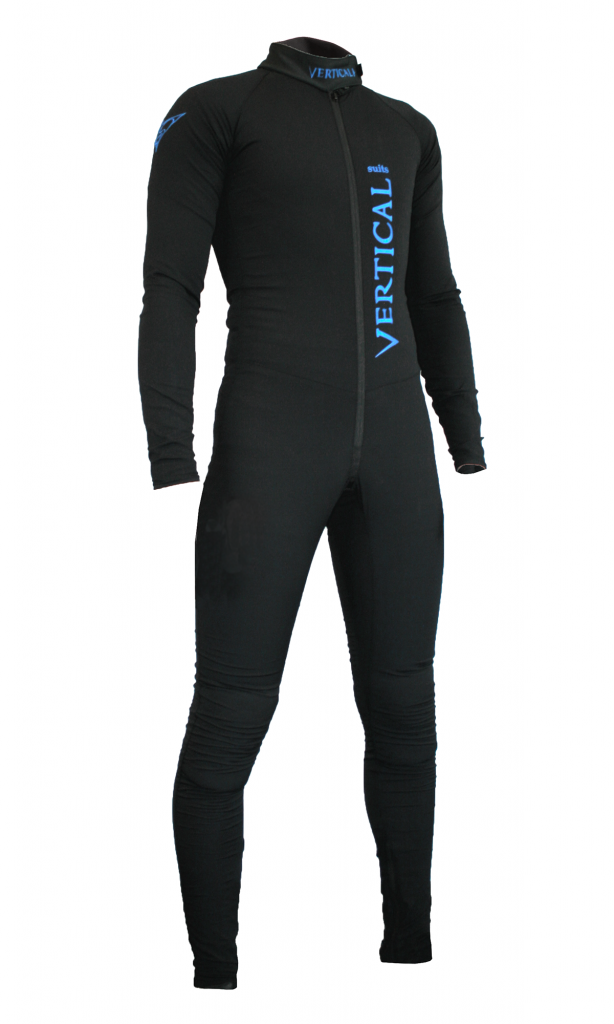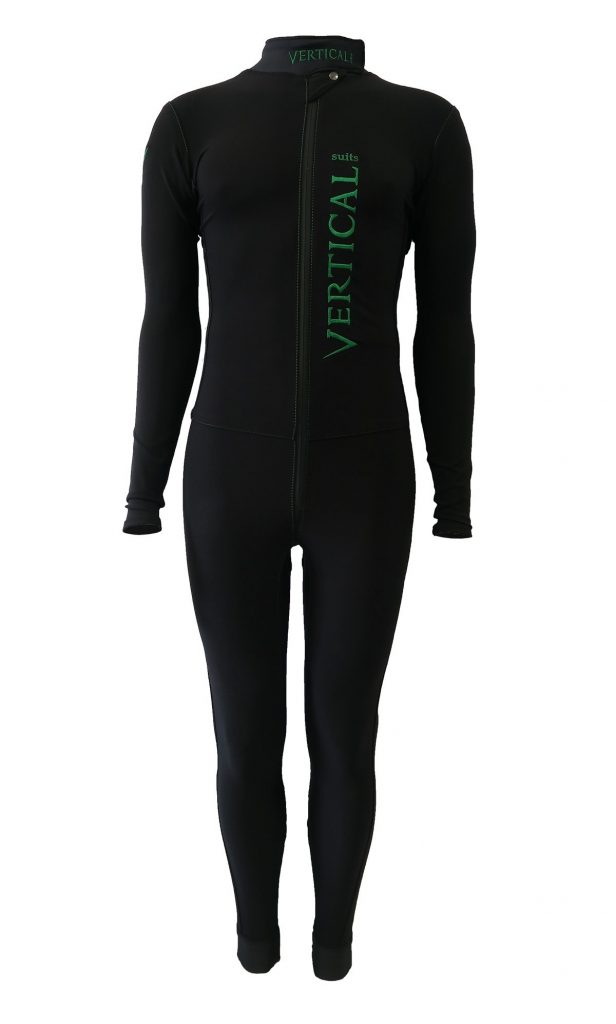Indoor bodyflight has become a sport with its own forms, methods and rules. Related to, but separate from skydiving – indoor flying has grown to require special suit designs that maximise the potential of every flyer. Let’s have a look at the two jumpsuits created specifically for the needs of the serious tunnel flyer – the Phoenix and the Speed.

Freestyle Flying
Velocity and tempo play an essential part in crafting a competition Freestyle routine, but (depending on who is casting judgement) the balance tends to lie in favour of body shape, style and precision. Freestyle moves often involve holding form in positions at the extremes of human ability – and doing so for long enough to register as mastery. A suit designed for Freestyle such as the Phoenix needs to be sufficiently powerful, but priority is placed on the total freedom of movement in every way that even the most bendy of humans can achieve. To grant it the necessary characteristics, our Phoenix suit is made from Durastretch – a Kevlar reinforced fabric that remains powerful while being stretchy enough for any move.

Dynamic Flying
In the current official format, Dynamic competitions do contain an artistic element – yet it is the speed rounds that almost always carry the day. High wind speeds and rigid body positions to generate drive are what is required to fly the lines at maximum performance. The Speed suit, built from Lycra blended Cordura Naturalle, has a little stretch to accommodate the changes – but adds some spring to help you throw your body from one shape to the next, one steep angle to another.
Reasoning
There has been a bit of scuttlebutt about the idea that Dynamic means ‘boy flying’ and Freestyle means ‘girl flying’. If you really wanted to, you could dress this up as an argument – but real world examples have quite proven the modern scene to be better than this kind of thinking. As of the last round of high-level competitions, the Freestyle world champion is male and the Dynamic 2-Way pair are a female/male split. In the sky, Freestyle gold belongs to a male performer (with male camera) and the Freefly title is held by a husband and wife team (also male camera). If there is a single thing that elevates bodyflight as a sport to being something profound – it is perhaps the way it manifests as a level playing field for everyone.
Why So Tight?
We got better at flying our bodies. Back in the day suits used to be super baggy to help with lift and drag, with the idea being that drag basically means control. With no small amount of help from the tunnel, people developed the understanding that using your actual physical shape to fly was not only sufficient – it was actually better. Learning to fly in a very tight suit is more challenging, but ultimately grants you a greater knowledge of what you are doing with your body. The modern blended materials are still there to help you, but having the suit fit very close to your body instead of flapping about rewards your efforts with better feedback and greater precision.
Which One?
As with many comparisons that can be drawn between the suits in the Vertical range, the answer lies in your priorities. Both the Phoenix and the Speed are created with high-end tunnel flying in mind. You can grind Dynamic lines in your Phoenix and you can practice Freestyle moves every-which-way in your Speed suit – but they each present some specificity to aid in each particular discipline. Get the one applicable to the kind of flying you do the most of – it has been made for you.


